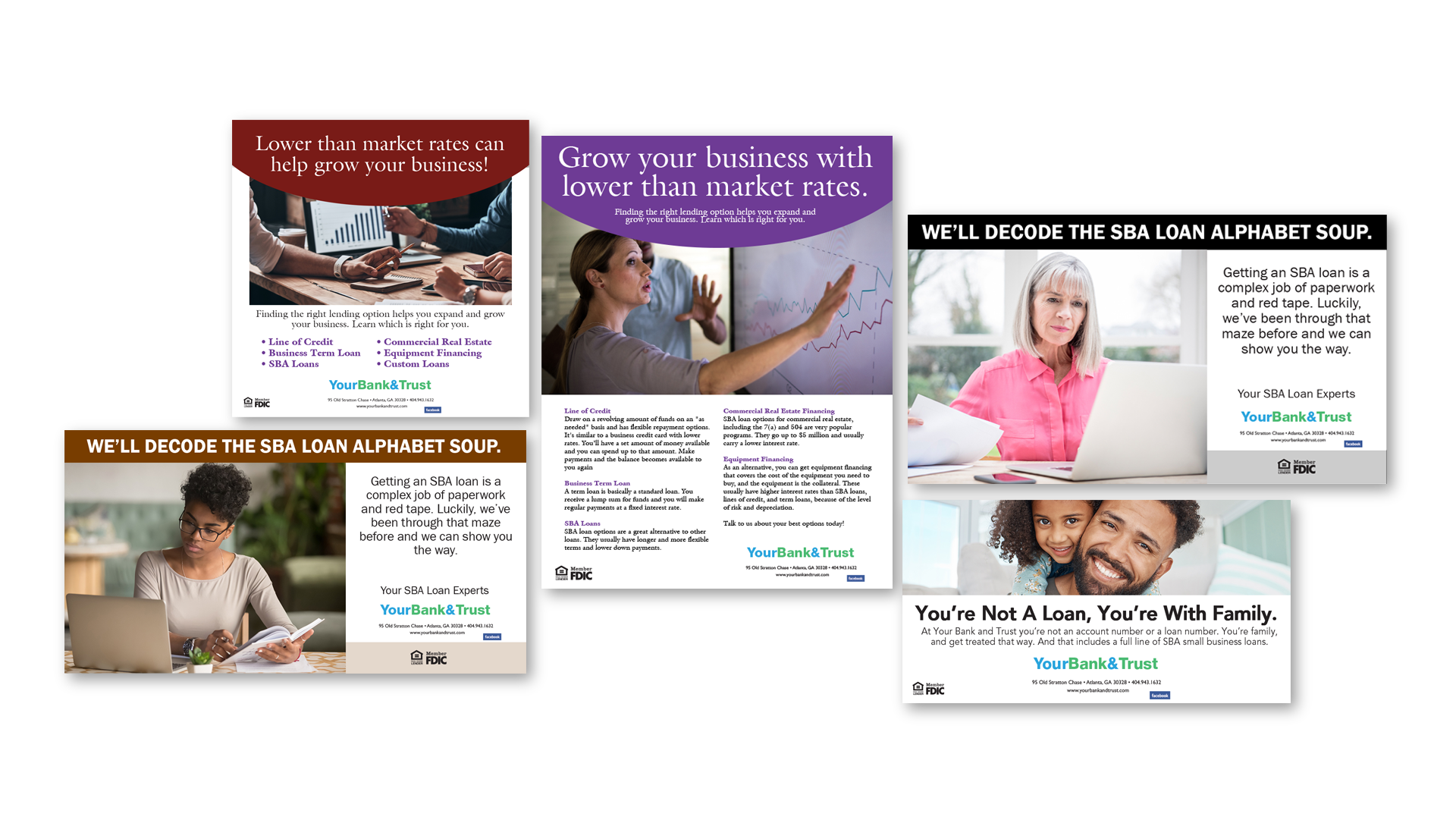
Well, this isn’t the first time we’ve talked about the benefits of social media marketing and you can be sure that it won’t be the last. Social media platforms have been the topic of many of our discussions. In a recent blog back in July, we talked about the benefits of platforms such as Facebook (now Meta, of course), YouTube, and TikTok. We didn’t talk about LinkedIn at the time. Why talk about LinkedIn today? Because a trend that we talked about last December in our blog, “Small business is big business,” continues to be an issue with small banks. “According to the US Chamber of Commerce, 99% of all businesses in the U.S. – about 37 million – are Small-to-Medium Sized Businesses (SMBs). And, according to meridianlink, 39% of those small businesses say community banks don’t understand them.
What’s a community bank to do? Make sure that your small business owners understand that you understand them! And where is a good place to do that? LinkedIn.
Now, if you’re looking to reach individual consumers, Facebook/Meta continues to dominate the social media landscape. Facebook currently boasts 2,900,000,000 users — and yes, that is the right number of zeroes. In comparison, LinkedIn currently boasts 810,000,000 users.
LinkedIn, however, is a platform that, as a community bank in search of SMB customers (and remember, there are about 37 million of them out there), provides some unique social platform benefits. Now, based on the user numbers above, you can see how LinkedIn might tend to get overlooked in the social media marketing world. Yes, LinkedIn is a great platform for (and is known for its power in) recruiting. But, its power goes well beyond that and now we’ll look at how.
Unlike every other platform, LinkedIn’s user base is comprised entirely of professionals and company accounts. For community banks, then, LinkedIn offers the unique opportunity to reach SMBs with messaging that is relevant and compelling to them in very specific ways; in marketing commercial deposit accounts, financing, and treasury services, for instance.
By optimizing your presence on LinkedIn and providing informative material that will be valuable to a commercial audience, you can engage with these professionals to generate interest in your brand, promote your content, and build a new source of leads. Here are a few best practices to keep in minding when engaging a small business audience:
- Make the most of your profile page with detailed information about your bank, location information, open positions you may have, and a link to your website.
- Encourage your employees to actively engage with the platform. Encourage those who don’t have a presence to set up an account. After all, your employees have networks of their own and their networks become your networks. Encourage them to be active, but to also be responsible. It’s best to have some guidelines in place that employees can be mindful of when they’re active on any social media platform. For SMB’s, we all know that a personal relationship with their bank is critical to them. Your employees can use LinkedIn to give your bank that personal image with posts that celebrate anniversaries and promotions, community events, their own positive work experiences, etc.
- Promote your LinkedIn presence whenever and wherever you can. Make mention of your platform presence on your website, in emails, with in-branch signage… In short, market your LinkedIn presence the same way that you would market any other product or service to your customers.
- Connect with your SMB audience through groups. LinkedIn groups are easy to find… simply search for them! Such a search can quickly yield the names of local business groups, professional associations, networking groups, for instance, and more. Joining these groups is like joining a club where its members all have similar goals and interests. What better way to connect with business owners than to join groups that they participate in?
- Forget about funny cat videos. Remember, LinkedIn is a B2B platform. Keep this in mind when creating content. Stay focused on those commercial customers who not only want and need commercial products, but also a trusted, personal relationship.
- Take advantage of the wide range of content options. Sure, you can post employee recognitions, anniversaries, etc, but LinkedIn gives you the opportunity to post product ads, educational videos, thought leadership articles, weekly/monthly newsletters geared toward small business, event/workshop/webinar promotions, and more. The more varied your content, the more likely that content is to engage your audience. These tactics also enable you to gather information (such as contact information) about your audience… information that you can utilize later in more targeted marketing, such as email marketing or direct mail.
- Make the most of features such as LinkedIn Pulse, SlideShare, and Inmail. If you already post regularly on other social media accounts, like Facebook, you can post much of the same content and updates on LinkedIn. For example, if you posted a long-form article on your bank’s blog, you can also publish it on LinkedIn Pulse, a personalized business news digest that provides content for LinkedIn users’ homepage feed and through a weekly email digest.
SlideShare is LinkedIn’s platform for infographics and presentations, enabling you to post PowerPoint or Google Slides presentations to your feed. SlideShare is incredibly easy to use and a great way to bring visual interest to your messaging. How interesting is it? According to LinkedIn, SlideShare messaging gets nearly 4 million visits each day.
And then there’s the Inmail feature. If you know someone who would benefit from a piece of content you’ve created, it might be appropriate to share it with them in a personalized direct message, instead of just hoping they’ll see it in your news feed. With InMail, you can see when or if someone has read your message. This is a casual way to discover the impact of your content sharing with individuals. If someone has read but not responded, you can follow up with them.
- Paid ads that target users by job title and industry. Here you can reach a very specific audience, not based simply on typical demographics such as age, location, and household income, but with the granularity of industry and job title. Now, you’re truly zeroing in on real prospects instead of taking a shotgun approach.
In conclusion…
Social media platforms continue to evolve. The hot platform of today, may not be the hot platform of tomorrow. So, your choices, and use of those platforms in your social media marketing arsenal must evolve, as well. As HootSuite says in their article, 47 LinkedIn Statistics You Need To Know In 2023, “there’s no better place to connect with business professionals than on LinkedIn.” And you know, they just may be right.
About Bank Marketing Center
Here at bankmarketingcenter.com, our goal is to help you with that topical, compelling communication with customers; the messaging — developed by banking industry marketing professionals, well trained in the thinking behind effective marketing communication — that will help you build trust, relationships, and revenue. In short, build your brand. Like this campaign, for example, that banks can use to reach out to small business customers.

To view our marketing creative, both print and digital – ranging from product and brand ads to social media and in branch signage – visit bankmarketingcenter.com. You can also contact me directly by phone at 678-528-6688 or via email at nreynolds@bankmarketingcenter.com. As always, I welcome your thoughts on the subject.